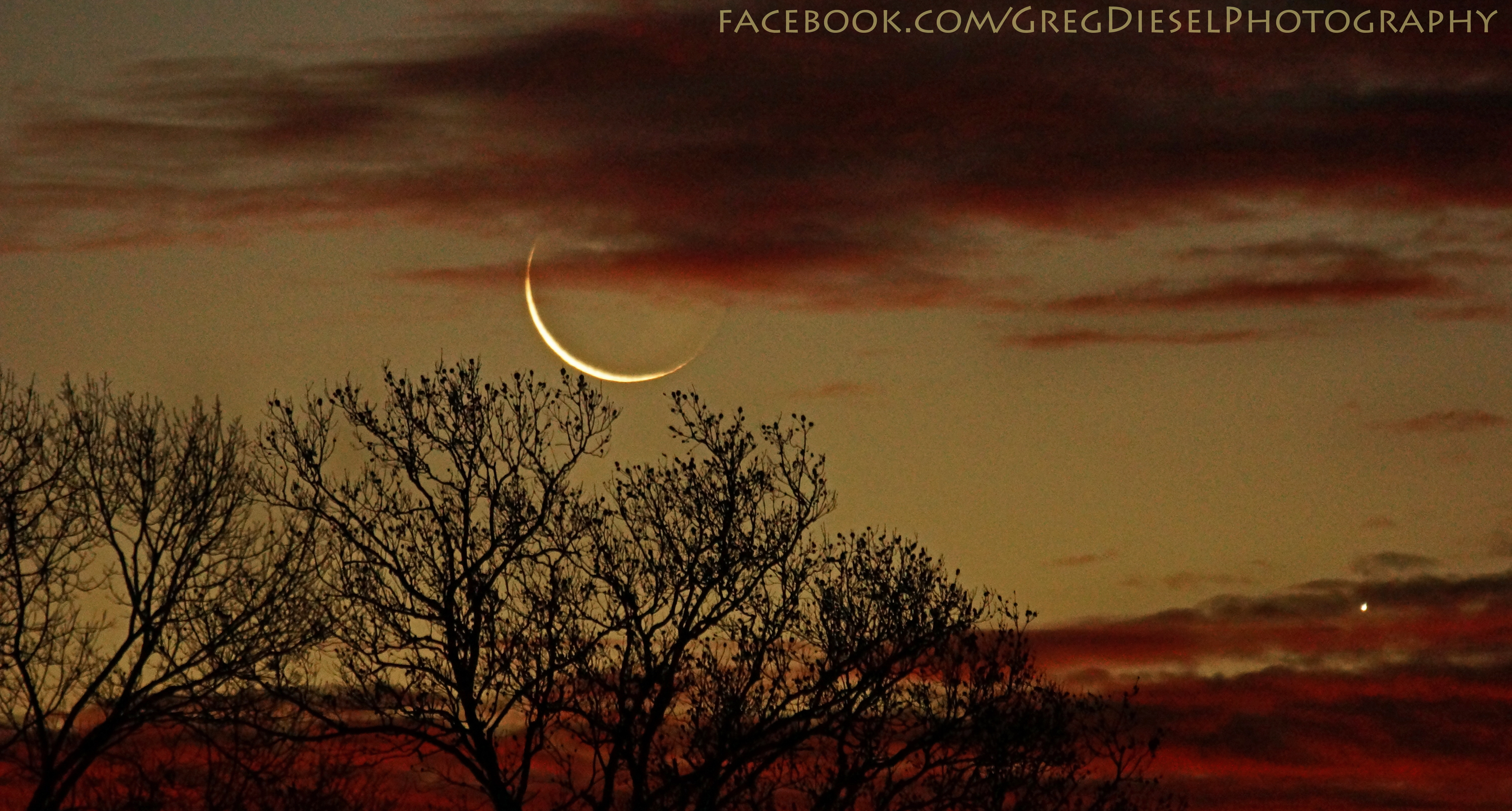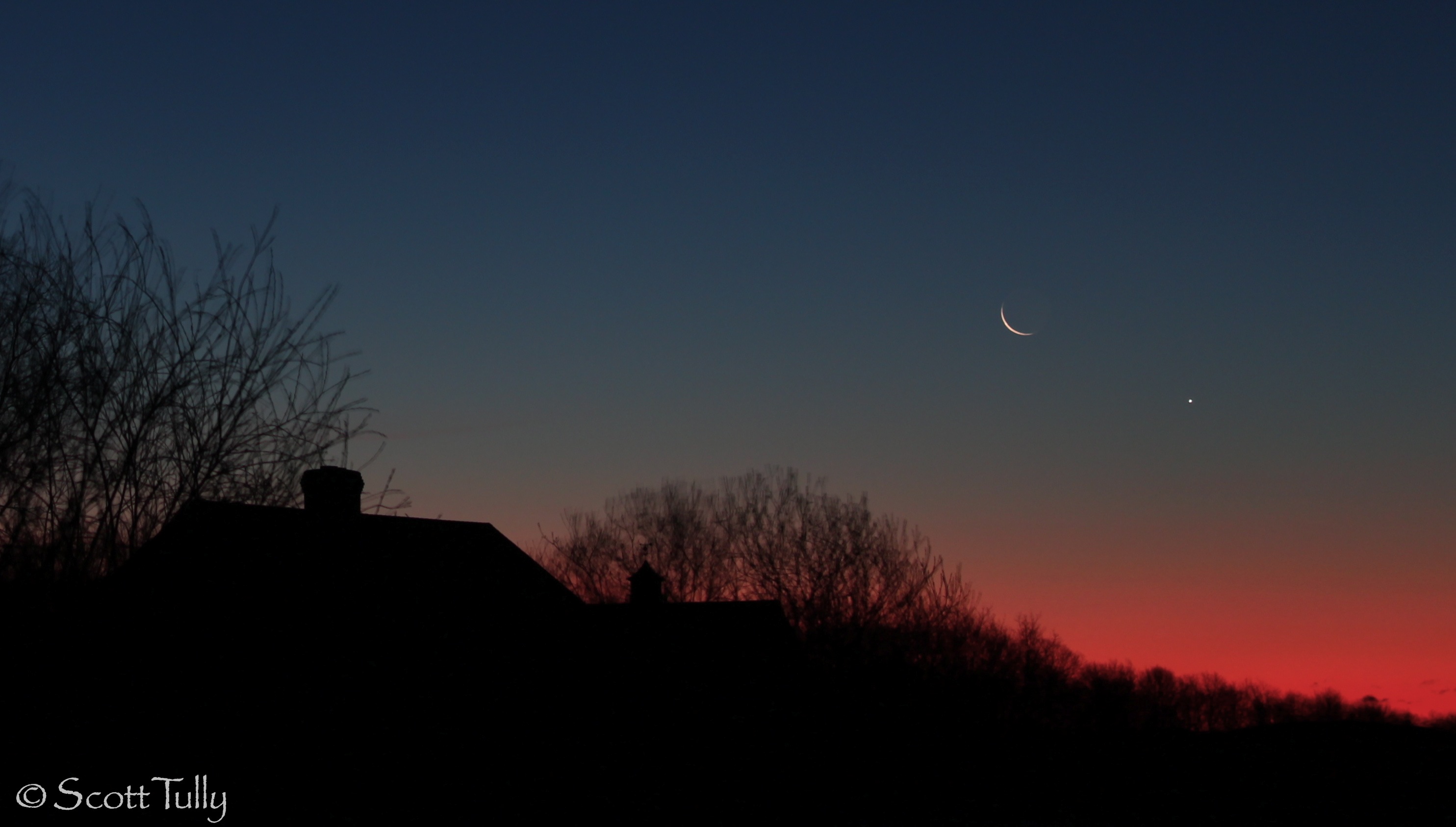
The serene glow of the pre-dawn sky Thursday (Jan. 10) proved the perfect setting for two stargazers to capture dazzling images of the crescent moon and Venus.
Venus and the moon shined close together before sunrise Thursday, with the dazzlingly bright planet appearing to the lower right of the slender crescent of the moon low in the southeastern sky. With Venus moving out of the morning sky, it was a celestial farewell of sorts for the planet and the moon that some stargazers couldn’t miss.
"When I got to my location I could hear the sounds of the roosters crowing at the farm nearby and the moon and Venus were already big and bright and shining brilliantly through the warm morning glow," observer Scott Tully told SPACE.com via email. Tully captured his beautiful image of the moon and Venus over rural Connecticut.
Despite cloudy skies, photographer Greg Diesel Walck also managed to take a spectacular shot of the moon and Venus over Currituck, N.C., using a Sony Alpha 65 camera with a 495mm of zoom, ISO 1600 and shutter 1/8 second exposure. His close-up view shows the moon as a slim grin in the night sky, with Venus shining bright nearby. [Amazing Night Sky Photos for January]
"I knew the timing of the sunrise, moonrise, Venus was going to be good, however it was somewhat cloudy. I kept running out to check the horizon and it paid off in this shot I call 'Morning Charade,'" Walck explained in an email.

Stargazers hoping to see Venus in the early morning sky should plan to rise well before dawn in the next few weeks. By the end of January, the planet will rise over the horizon during the mid-twilight of sunrise, making it hard to see. By Feb. 1, Venus will be completely lost in the sun’s light.
Venus will return as a bright night sky object in late April, when it will be visible in the evening sky. The planet won’t appear near the moon, however, until Sept. 8.
Get the Space.com Newsletter
Breaking space news, the latest updates on rocket launches, skywatching events and more!
Meanwhile, another bright planet is also clearly visible to stargazers this month, and you don’t have wake up in the wee hours to see it.
Jupiter is currently shining bright in the evening sky in the constellation Taurus. It rises in the eastern sky and sets in the northwest at around 3 a.m. your local time. Jupiter and the moon will have a close rendezvous on Jan. 21, promising a dazzling for observers with clear, dark skies.
Editor's note: If you snap an amazing photo of Venus and the moon, or any other night sky object, that you'd like to share for a possible story or image gallery, send photos, comments and your name and location to managing editor Tariq Malik at spacephotos@space.com.
Follow Space.com on Twitter @SPACEdotcom. We're also on Facebook & Google+.
Join our Space Forums to keep talking space on the latest missions, night sky and more! And if you have a news tip, correction or comment, let us know at: community@space.com.
Nina Sen is a freelance writer and producer who covered night sky photography and astronomy for Space.com. She began writing and producing content for Space.com in 2011 with a focus on story and image production, as well as amazing space photos captured by NASA telescopes and other missions. Her work also includes coverage of amazing images by astrophotographers that showcase the night sky's beauty.









